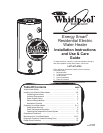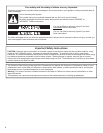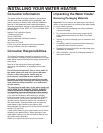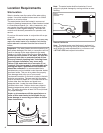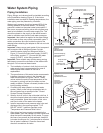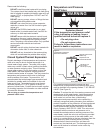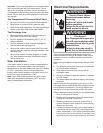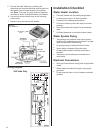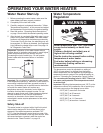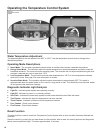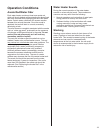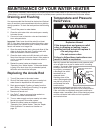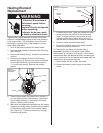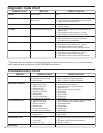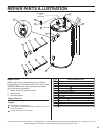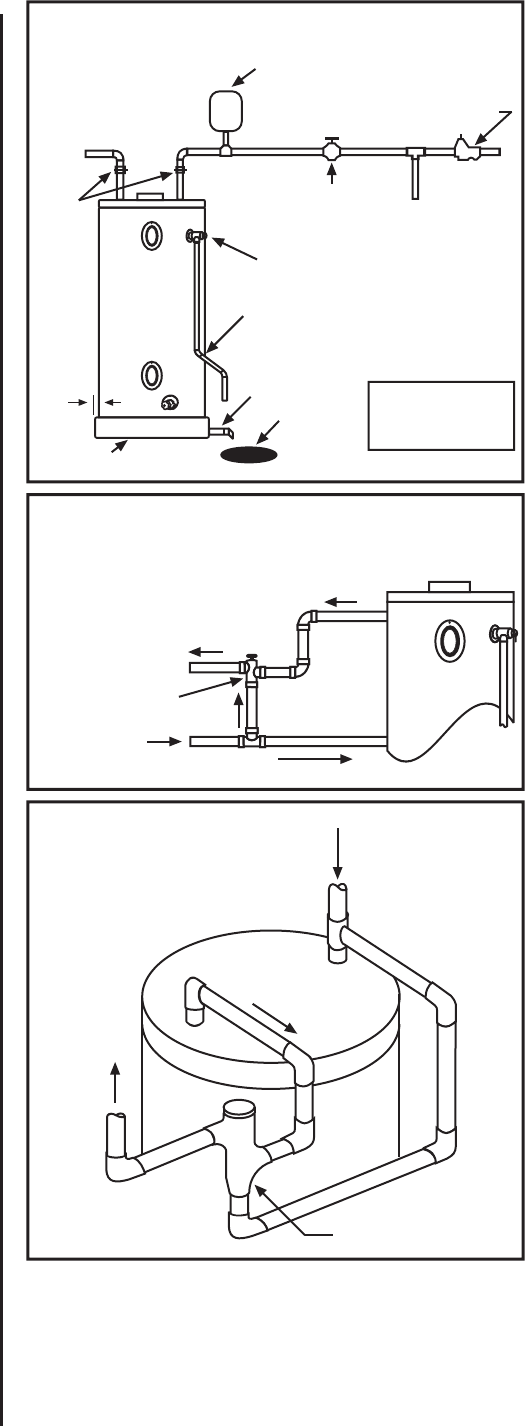
5
Water System Piping
Piping Installation
Piping, fittings, and valves should be installed according
to the installation drawing (Figure 2). If the indoor
installation area is subject to freezing temperatures, the
water piping must be protected by insulation.
Water supply pressure should not exceed 80% of the
working pressure of the water heater. The working
pressure is stated on the water heater’s data plate. If
this occurs a pressure limiting valve with a bypass may
need to be installed in the cold water supply line. This
should be placed on the supply to the entire house in
order to maintain equal hot and cold water pressures.
Important: Heat cannot be applied to the water fittings
on the heater as they may contain nonmetallic parts. If
solder connections are used, solder the pipe to the
adapter before attaching the adapter to the hot and cold
water fittings.
Important: Always use a good grade of joint compound
and be certain that all fittings are drawn up tight.
1. Install the water piping and fittings as shown in
Figure 2. Connect the cold water supply (3/4 NPT)
to the fitting marked “C”. Connect the hot water
supply (3/4 NPT) to the fitting marked “H”.
Important: Some models may contain energy saving
heat traps to prevent the circulation of hot water within
the pipes. Do not remove these inserts.
2. The installation of unions in both the hot and cold
water supply lines is recommended for ease of
removing the water heater for service or
replacement.
3. The manufacturer of this water heater recommends
installing a tempering valve in the domestic hot
water line as shown in Figures 3 and 4. These
valves reduce the point-of-use temperature of the
hot water by mixing cold and hot water and are
readily available. Contact a licensed plumber or the
local plumbing authority.
4. If installing the water heater in a closed water
system, install a relief valve or expansion tank in
the cold water line as specified under "Closed
System/Thermal Expansion".
5. Install a shut-off valve in the cold water inlet line. It
should be located close to the water heater and be
easily accessible. Know the location of this valve
and how to shut off the water to the heater.
6. Install a temperature and pressure relief valve and
discharge line in the opening marked "T & P
RELIEF VALVE". Install as specified under
"Temperature and Pressure Relief Valve.”
7. After piping has been properly connected to the
water heater, open the nearest hot water faucet and
allow the tank to completely fill with water. To purge
the lines of any excess air and sediment, keep the
hot water faucet open for 3 minutes after a constant
flow of water is obtained. Close the faucet and
check all connections for leaks.
Figure 4
Tempering Valve
Top Water Connections
Follow the
tempering valve
manufacturer’s
instructions
Cold
Water
Inlet
Hot
Water
Outlet
Tempered
water to
fixtures
Tempering Valve
(Set to 120° F)
Figure 3
Tempering Valve
Side Connection
Follow the tempering
valve manufacturer’s
instructions
Tempered water
to fixtures
Hot
Water Out
Cold Water In
Tempering valve
set to 120° F max.
In a Closed System use a
Thermal Expansion Tank.
Pressure Reducing
Valve With Bypass
Main
Water
Supply
Cold Water
Supply to
Fixtures
Cold Water
Inlet Valve
Hot Water
Outlet
Union
Temperature and
Pressure Relief Valve
Discharge line
6” maximum
above drain
Drain line
3/4” ID
minimum
Drain
Drain Pan
2-1/2” depth max.
1”
Min.
Massachusetts:
Install vacuum relief
in cold water line per
section 19 MGL 142.
Figure 2
Water Piping Installation



